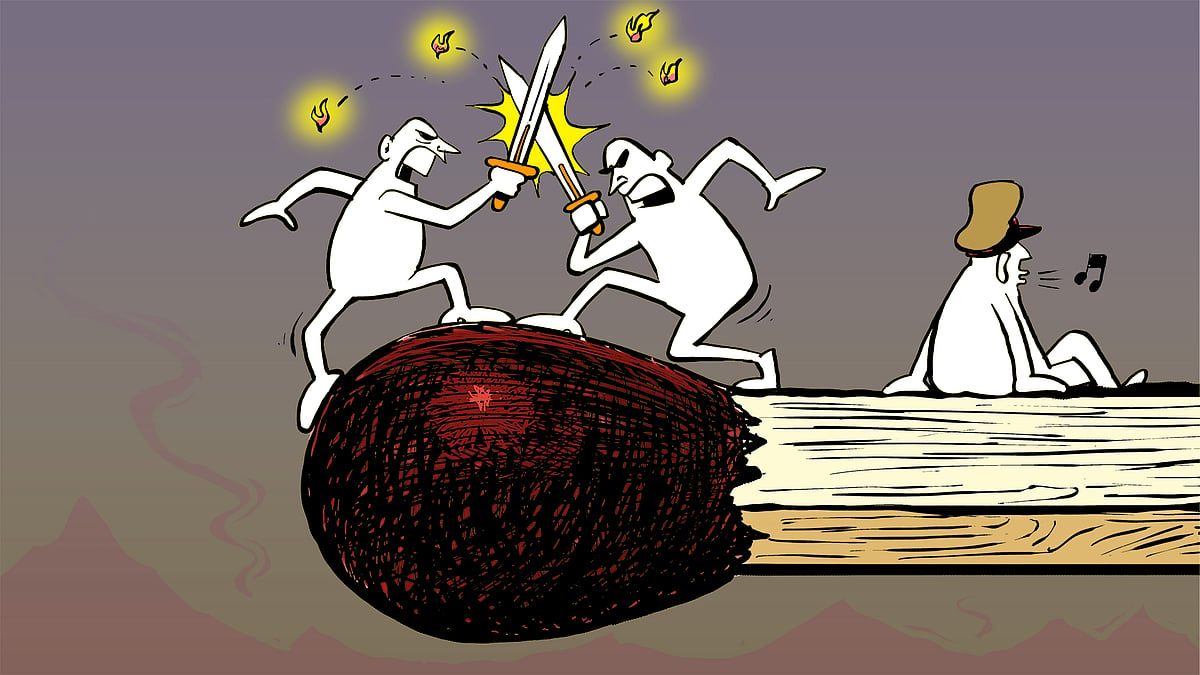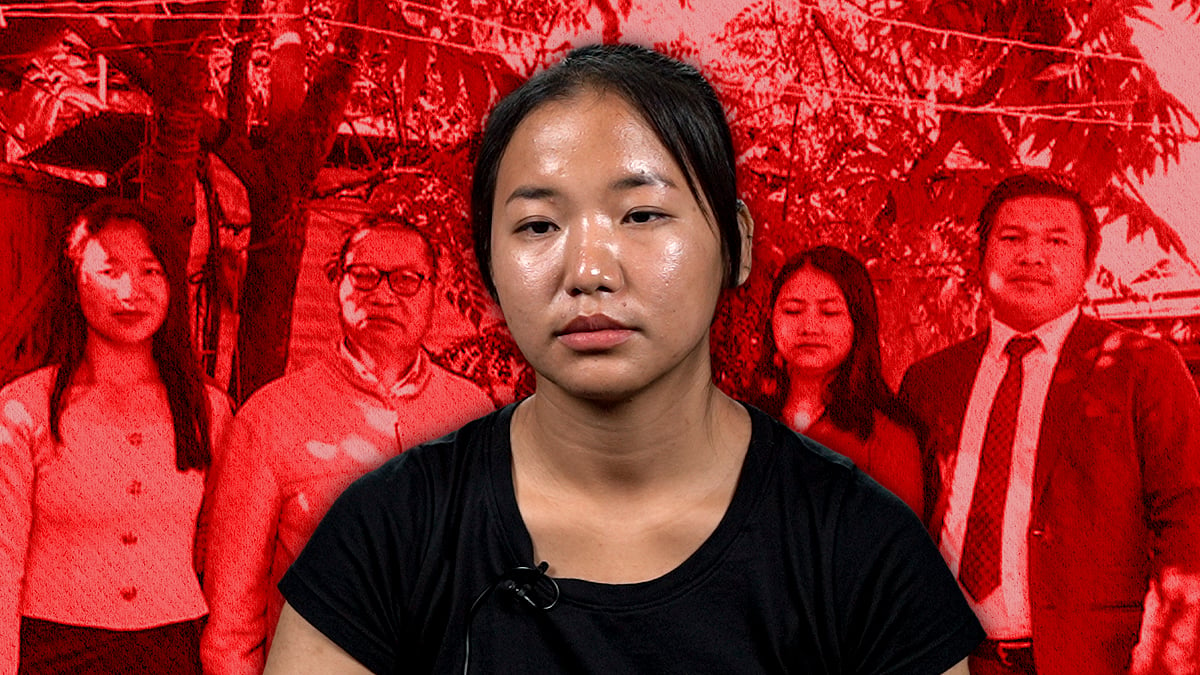‘There were 90 pellets in his shoulder’: In Manipur, central forces accused of targeting school students
Eight students suffered pellet gun injuries after security forces ‘cracked down’ on a protest last week in Imphal.
“They could have used water cannons or lathi-charged the students. But why did they have to use pellet guns to attack student protesters? Have they used pellet guns on school students protesting in Delhi, Mumbai or other parts of mainland India? Then why Manipur?”
Somokanta Loitongbam’s voice was filled with anger and sorrow as he spoke to Newslaundry over the phone on October 1. Three days before, his son Kishan, 17, was allegedly shot with a pellet gun at point-blank range. Kishan’s right shoulder was shattered.
“Are these students any different from the students of other parts of the countries?” asked Somokanta. “Are they not Indians?”
Kishan was part of a group of school students protesting the deaths of two Class 12 students who had gone missing in Manipur on July 6. Newslaundry had reported on the sequence of events at the time. On September 25, photos of their bodies were posted on social media, alongside reports that they had been abducted and killed.
Students swiftly organised protests in Imphal on September 26 and 27, demanding that Chief Minister N Biren Singh take action in the two killings. The students – many of whom wore school uniforms – were marching towards Singh’s house when they were stopped by the police and personnel from the Central Armed Police Force. According to students, the security forces reportedly used rubber bullets, mock bombs, tear gas and pellet guns to disperse the students.
Over 50 students were injured. Eight, including Kishan, suffered injuries from pellet guns. All eight of them are minors.
Kishan is a student of Class 12 at Yairipok’s Thambalnu Higher Secondary School in Imphal. His father alleged a member of the Rapid Action Force, a specialised security force, had fired at him with a pellet gun.
“My son was protesting with other students in the Moirangkhom area of Imphal West. He went in the afternoon and the incident happened around 2.30 pm,” Somokanta said. “Security forces started shelling tear gas and mock bombs to disperse the students. Many students ran away and hid. My son was hiding in a house. When they stopped hearing the tear gas, they came out and were planning to return home. My son came out on the road and saw RAF personnel. One of them got hold of him and shot at his right shoulder from point-blank range.”
Kishan was rushed to the emergency ward of Shija Medical Hospital and underwent surgery. He spent four days in the ICU.


Dr Indraneel Dutta is the plastic and reconstructive surgeon at the hospital who operated on Kishan. Dutta said it was a “critical injury” and that Kishan’s shoulder “was shattered”.
“There were 90 pellets in his shoulder. We extracted around 60 pellets,” Dutta told Newslaundry over the phone. “Thirty pellets remain as they are very deep and it could have taken a very long time to remove...It took us around three hours to conduct the surgery. His shoulder joint was completely torn. All the muscles were torn. It was a horrible wound.”
The remaining 30 pellets will be removed after Kishan’s plaster comes off in six weeks. Dutta cautioned that Kishan is looking at “at least six months” of recovery and it’s uncertain whether he’ll ever fully recover.
Violence against a non-violent protest
On September 26, the RAF allegedly shot 100 pellets into 17-year-old Soaibam Uttam’s head.
Uttam is a national-level wushu player. Just a few months before he participated in the protest at Imphal, he tried out for the Asian Games.
His older brother Soaibam Kangleinganba told Newslaundry that Uttam had attended a protest at around 2 pm on September 26. The protest went on until midnight; Uttam was injured at around 11 pm.
“He was protesting at the Sapam Leikai area of Singjamei when security forces started shelling tear gas and mock bombs,” Kangleinganba said. “He ran away and was hiding inside the compound of a house. But he was seen by the RAF, who were searching for protesters. They shot him with a pellet gun. He was bleeding profusely. Fortunately, he was helped by the house owner in whose compound they were hiding. They gave him first aid and sent him to Raj Medicity Hospital.”
Like Somokanta, Kangleinganba demanded to know why security forces used pellet guns against minor students.
“They could have used water cannons. There was no need to shoot at them with lethal weapons,” he said. “It’s totally unfair on their part to attack minor students with such weapons.”


Eight students in total, all minors, suffered pellet gun injuries. Apart from Kishan and Uttam, Nongthombam Kingson, 16, was injured in his abdomen. Laishram Bishwanath, 17, suffered injuries to his face. Thokchom Lemenson, 15, was injured in his thorax and Takhellambam Pipin, 15, in his leg and head. Langam Romakanta, 16, was injured in his ribs and back and Nambam Manao, 16, in his face, throat and head. All six were admitted to Shija Hospital.
Kingson’s cousin Nongthombam Lemba told Newslaundry that doctors removed 24 pellets from Kingson’s body.
His sister Ronika, 28, said, “The school students were in uniform while protesting. They were unarmed. Ninety percent of them were minors. Despite that, security forces shot them with pellet guns.”
Bishwanath’s brother Lancsenba told Newslaundry, “My brother was shot by the RAF. They were directly firing at students. Who gave them orders to fire with pellet guns, with lethal weapons? Some of the students were just 15 years old. We understand it’s important to control a crowd but they could have easily done it with water cannons and tear gas. Using pellet guns is not the way to control children.”
It should be noted that globally, the police’s usage of water cannons and tear gas has been criticised as well for inflicting injuries on protesters. As for pellet guns in India, they’ve been used in Kashmir, drawing widespread condemnation. From mid-2016 to 2018, 1,253 people were blinded in Kashmir by metal pellets used by security forces.
Babloo Loitongbam, a human rights activist in Imphal, pointed out that the students had only been “exercising their fundamental right to freedom of assembly”.
“They were protesting in a non-violent manner, demanding justice for their fellow students brutally killed,” he said. “To use excessive and lethal force against them, including pellet guns without any prior warning from the concerned magistrate, is an act of naked state brutality...In the context of the ongoing ethnic conflict, it may also be seen as an act of provocation to fuel the cycle of violence.”
Newslaundry sent questions to the office of Akhilesh Prasad Singh, IGP of Manipur and Nagaland sector, RAF. This report will be updated if he responds.
 As Modi’s visit looms, tracing the missed warnings that set Manipur on fire
As Modi’s visit looms, tracing the missed warnings that set Manipur on fire ‘Can still feel the blows...Imphal murdered my family’: Manipur violence survivor recalls escape
‘Can still feel the blows...Imphal murdered my family’: Manipur violence survivor recalls escape 